June 4, 1971: Napoles vs Backus II
Cuba’s messy political issues in the last half-century have made for countless stories of struggle and triumph, though more the former than anything else. From rafting across shark-infested waters to Florida, to defecting in the middle of international amateur competitions under the guise of getting a snack, and either way leaving behind family and loved ones, Cuban boxers who exiled themselves to enter the pro ranks have endured hardship and took great risks. Though sometimes the hardship came courtesy of the squalid slums they were born into, like the stifling Santiago de Cuba area that birthed Jose Napoles.
Napoles was determined to follow in the footsteps of Cuban greats like Kid Gavilan, Kid Chocolate and Black Bill and after boxing was banned by Fidel Castro’s revolutionary government in 1961 he defected to Mexico. He was given a surprisingly warm reception in his adopted home, despite a tendency to box rather than punch, even though he could do both quite well. His predilection toward gliding earned him the nickname “Mantequilla,” or butter, as in “smooth as.” It didn’t hurt that Napoles had also picked up manager Carlos “Cuco” Conde, a fellow defector who had been a sports announcer, writer and then boxing promoter in Cuba.
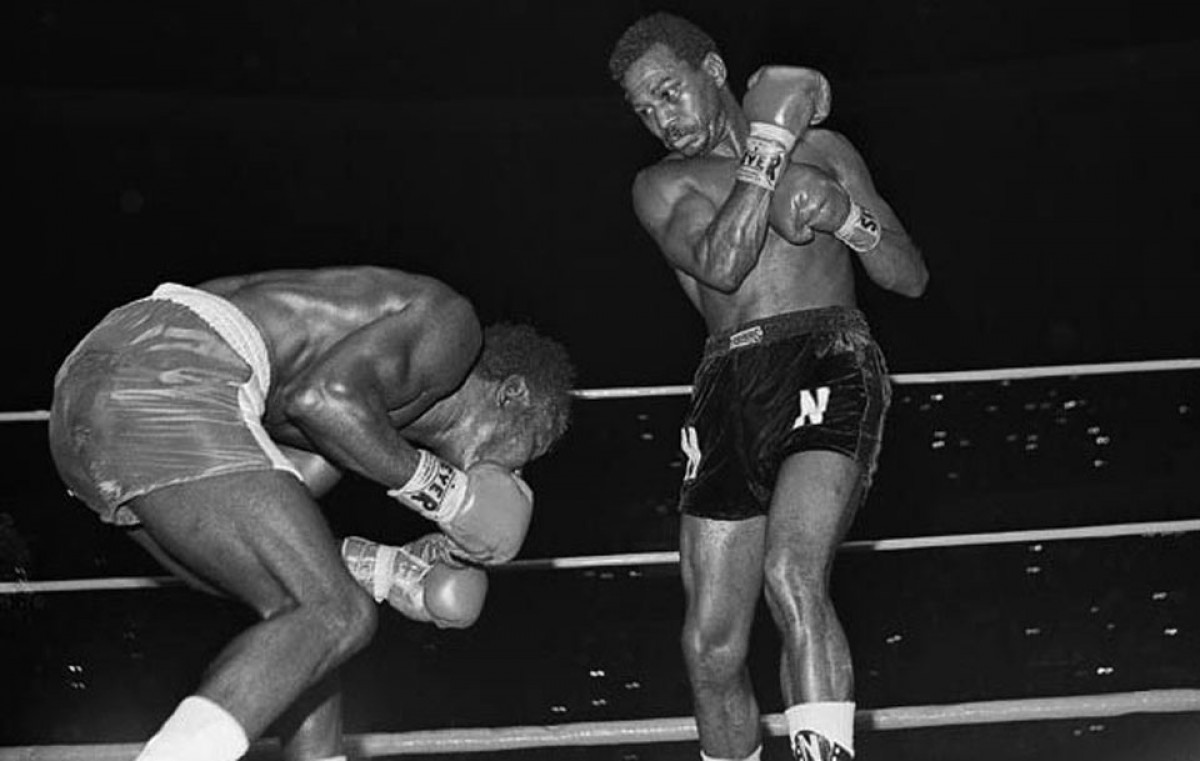
When Napoles got his chance at the welterweight title in 1969, after having torn through whatever ranked fighters he could get his hands on in Mexico, his record was an impressive 59-4, with 38 knockouts. Of his losses, Napoles avenged all but one, and by stoppage. If he had any serious weakness, it was his skin, as his only stoppage loss was on cuts.
Napoles had fought north of Mexico’s border only twice, at The Forum in Inglewood, California, and against fighters who weren’t on his level. No big names would dare come to Mexico to face Napoles, and no American promoters would put up the money to get Napoles across the border for a significant match. That’s where legendary Los Angeles promoter George Parnassus proved crucial to Napoles’ success, as he worked to get him a shot at champion Curtis Cokes.
Cokes had several losses already, but only one by stoppage, to Philly fighter Stanley “Kitten” Hayward. But Napoles was no kitten, and he battered Cokes until the champion stayed on his stool after round thirteen. Two months later Napoles stopped Cokes again, only sooner, before defending the title against aging great Emile Griffith and then Danny “Little Red” Lopez’s brother Ernie. Two non-title bouts in the last half of 1970 brought Napoles to a December title defense against Billy Backus in Syracuse, New York, a stone’s throw from Backus’ hometown of Canastota.
Even though he was the nephew of former welterweight great Carmen Basilio, Backus had been introduced to boxing through restaurant owner, fight manager and trainer Tony Graziano in the 1950s. Graziano had a gym, and years later he told of how he learned of Backus’ relation to Basilio. “I was outside the bank one day, and Nellie, Carmen Basilio’s sister, strolls over and says, ‘Hey, you got my kid boxing.'”
Backus, a tough, scrappy, “punching little bastard,” per Graziano, learned his trade by taking lumps in the gym. A reported amateur record of 13-2 included two regional titles at featherweight and a semifinal showing in the 1961 Nationals. Backus turned pro later that year, but his record was uneven at best, notable successes the exception, not the rule. In his first eight years as a pro, his best win was a knockout of Canadian journeyman Dave Hilton Sr., father of the famous fighting Hilton brothers. In need of funds, Backus often worked multiple jobs, and in need of a win streak, he put together a few victories over fringe contenders and journeymen, five straight in 1970, setting him up for a title shot against Napoles.
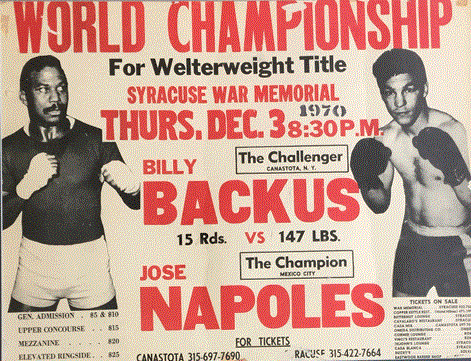
In the third round of a bloody brawl, and with both men already cut significantly over the right eye, Napoles ran full force into the southpaw challenger’s head causing a horrible gash over his left eye. This second wound prompted the referee to stop the bout in the fourth and award Backus the title. The Syracuse crowd went wild and Upstate New York had another champion. Backus would later say in an interview with Dan Hanley that he fought 9-to-1 favorite Napoles literally for free the first time, as his representative, the Canastota Boxing Club, was somehow out-witted by Parnassus.
Napoles was forced to heal up for a few months, but for the rematch legendary trainer Angelo Dundee was hired to work his corner due to his noted ability to do quick cut work between rounds, something his former charge Carmen Basilio knew all about. A knockout of former title challenger Manuel Gonzalez had Napoles in position for a rematch, this time back at The Forum. In the meantime, Backus had won two, including a victory over Robert Gallois in Paris.
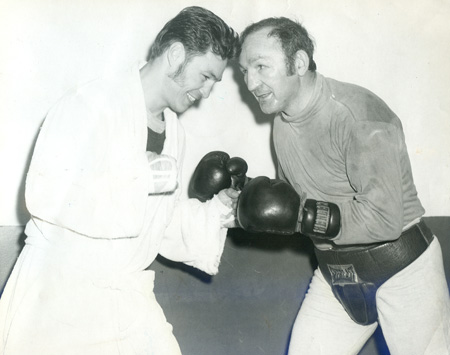
Backus was installed as a 2-to-1 underdog despite the win in the first fight, but at least he wouldn’t be fighting for free this time. Napoles took to sparring with light heavyweight Roger Rouse and on June 3, the day before the bout, Napoles told Associated Press reporters he was upset that a sparring partner hadn’t shown up that day. In fact, the word in the gyms was that the Cuban had sent several sparring partners packing. Basilio, who had recently stepped in as trainer for Backus, didn’t care. He told reporters, “Billy is ready. The weight is no problem. He’s ready to go 15 rounds if necessary.”
Graziano was more colorful with his language when asked about Napoles and the support of the Mexican fans at The Forum. “I don’t care if they got half the Mexican army in there. We got that dago blood in us and we don’t give a hoot how tough he is. When that fight starts, those fans there can’t help him in the ring.”
Early in the fight, it appeared as if Napoles might indeed require outside assistance, as in the first minute his right eye split open. Backus’ right jab was catching Napoles with surprising regularity, as Napoles stayed in range after punching for some reason, rather than stepping to the side or away. Napoles’ sharp but winging shots were catching Backus early too, however, and the champion’s face was reddened as a result. Though there wasn’t any actual brawling, the introduction period was cut short as well, and round two continued with both fighters landing stinging shots. More measured was Napoles’ pace, until the final minute, which featured a great sequence of punch-trading. Napoles, peering through a crimson veil, got the better of it and inflicted a cut near Backus’ left eye before the bell.
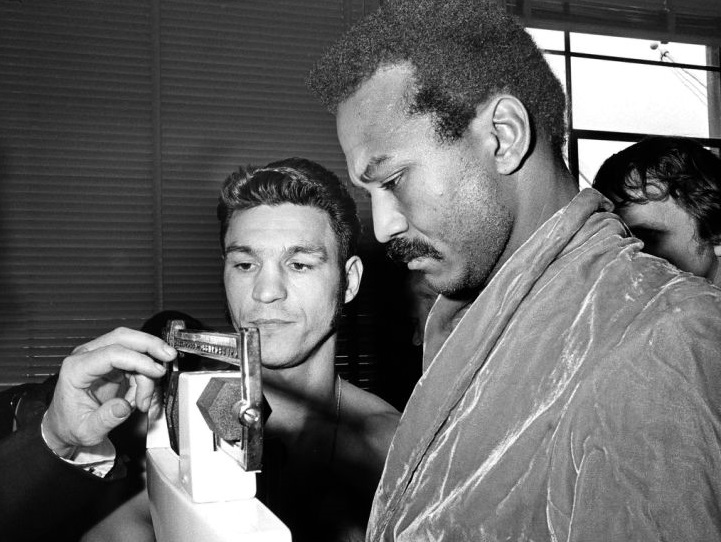
Backus had figured out the range for Napoles’ hooks to the sideburns, so in round three Napoles used jabs and lead rights to stave off Backus’ rushes, puff up his right eye, and wrest control of the fight. Afterward, Napoles said, “I think I solved his style about the third round.” More rights and jabs in the fourth proved he had, and the movement from Napoles became more subtle and shifty, causing most of what Backus chucked to fall short, even though the Cuban’s bad cut reopened. But Dundee controlled the bleeding, which meant Napoles had time to figure out the distance, which he did.
Round five continued with Napoles setting basic traps that Backus walked right into, and a cut soon opened over the left eye of the champion. In the sixth Backus’ eye puff turned into a more grotesque kind of swelling, and Napoles used the lead rights to dust off his left hook and jar Backus with it in round seven. Fatigue and facial damage on the part of the champion betrayed his lack of defense and in round eight Napoles again found openings for the hook and twice sent Backus to the canvas. After the second knockdown the referee had the ring doctor examine young Billy and the fight was stopped.
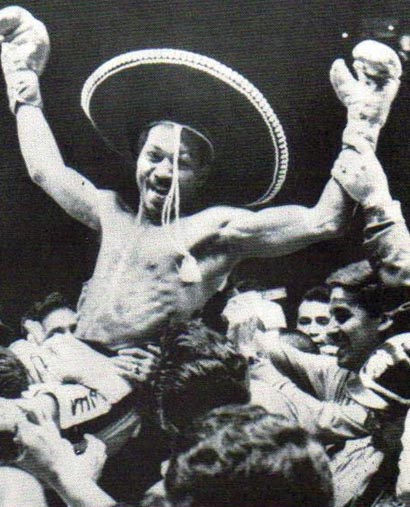
The 15,000 fans in attendance, who were overwhelmingly in support of the challenger, roared in approval, as Napoles himself exulted, shouting, “Mi título! Mi título!”
After this Backus would largely became fodder for serious contenders and was stopped repeatedly for cuts around his eyes. He did put together a respectable enough win streak in 1978 to justify a shot at WBA welterweight titlist Jose “Pipino” Cuevas who cut up Backus’ eyes some more in just a single round of action, the loss signalling the end of Billy’s career.
It would take a veritable middleweight titan like Carlos Monzon to keep Napoles down the next time “Mantequilla” suffered a defeat. The Cuban exile would defend his title nine times over the next few years, with wins over stand-out talents Armando Muniz and Hedgemon Lewis. By the time he retired, after an upset loss to John Stracey in 1975, he had succeeded in honoring the proud fighting tradition of his compatriots, Gavilan, Chocolate and Black Bill. — Patrick Connor

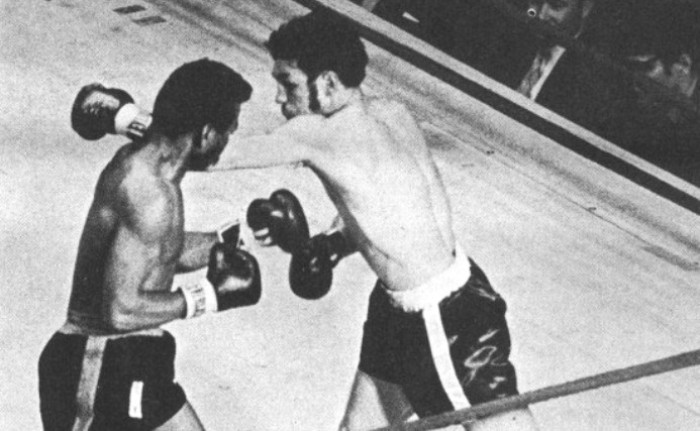

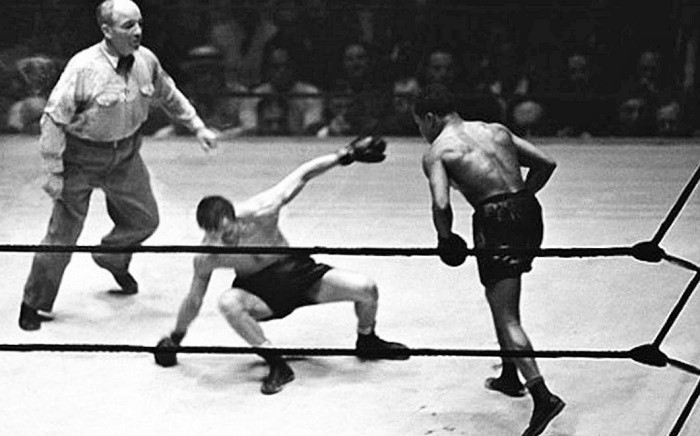
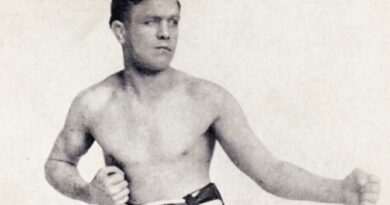
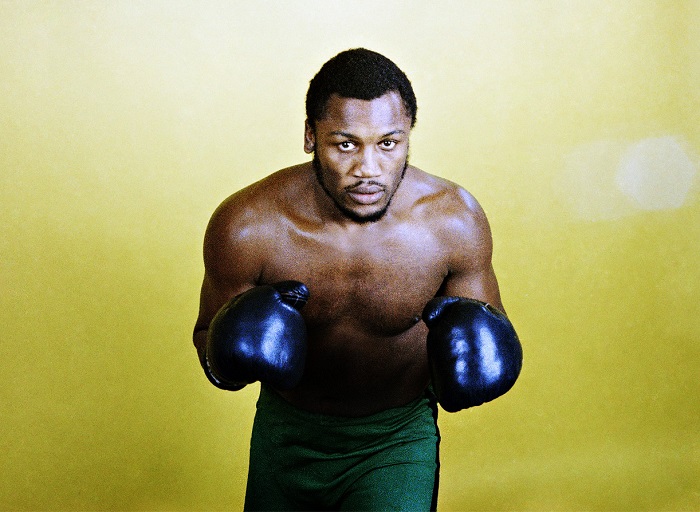
“Mantequilla” Napoles was one of the greatest!! Thanks, FightCity, for making sure this great Cuban boxer doesn’t go forgotten. Your fight history pieces are a huge contribution to boxing.